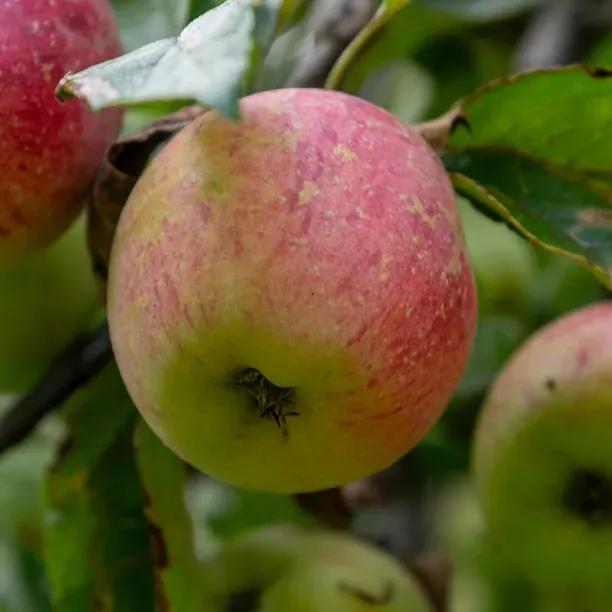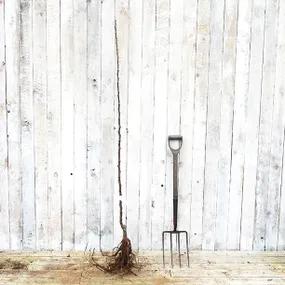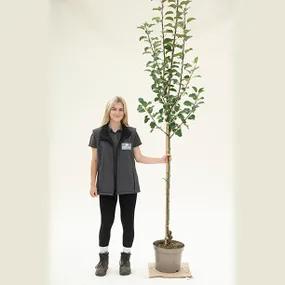Irish Peach Apple Trees
Honest Delivery Prices- Height: to 4.5m
- Use: eating
- Pruning: partial tip bearer
- Pollination: Not self fertile
- Pollination: group B
- Picking:August.
- Apple colour: orange/red over green
Recommended extras
Description
Malus domestica Irish Peach
Irish Peach is a handsome tree with an upward spreading habit that bears some of the earliest dessert apples around: you can usually pick towards the end of July, and it is at its best when eaten straight from the tree.
The fruit is a medium size with an orange-red streaked flush over a yellowy green base. The flesh is white, and the taste is a good balance of sweetness and acidity. This is definitely not a fruit to store, but it makes top-notch Tarte Tatin with lots of very thick cream.
Irish Peach has some resistance to woolly aphid, mildew, bitter pit and cedar apple rust ,making it a dependable tree and a good cropper.
Browse our range of apple trees or the full variety of fruit trees.
Features
- Height: Bushes reach 3 metres, half-standards touch 4.5 metres
- Use: eating/dessert
- Flavour: aromatic with peach overtones
- Pruning: partial tip bearer
- Pollination: Not self-fertile
- Pollination Group: group B
- Picking: August but does not store
- Apple colour: orange/red over yellowy/green
Growing Irish Peach
As a reasonably large and pretty tree, Irish Peach will make a good feature in your garden surrounded by long grass filled with Camassias or Triumph Tulips like Hemisphere, which flowers at the same time for a pretty pastoral scene.
Strong and robust, it would also cope with a lovely rambler like Paul's Himalayan Musk scrambling through its branches, or a Clematis like the deep purple Etoile Violette.
Pollination Partners for Irish Peach:
Your trees are not self-fertile and require a pollinator from group A, B or C.
A small, neat and excellent cooker to do this could be Reverend W Wilkes, or for another dessert apple that you harvest a little later try Lord Lambourne.
Planting Instructions
Clear and weed a circle at least 1m in diameter (and keep it weeded).
Make a square hole that is comfortably wider than the roots of your Irish Peach roots but only 5 cm deeper. The hole should be at least 30cms from any wall.
Bang in a tree stake off centre and to the south west if the tree is free standing.
Soak the roots in water for at least an hour.
Mound a little soil in the bottom of the hole and settle the tree roots on it until the soil mark on the trunk is at the same level as the surrounding soil and/or the grafting scion is at least 5cms above soil level. Remove the tree, sprinkle Rootgrow in the hole, wet the roots again to ensure good contact with the Rootgrow and return to the hole.
Backfill slowly, treading down gently as you go. Use a tree tie to attach your tree to the stake if freestanding.
Fit a treeguard. Water in with about 2 gallons/9 litres of water. Mulch the whole area. Water again the next day and then weekly afterwards through the first summer.
Did You Know?
Bred it in Sligo in the 1810s, it was sent to the London Horticultural Society by the nurseryman John Robertson of Kilkenny in 1819. It became extremely popular in Victorian and Edwardian England, grown commercially in Kent.






 2.webp)
